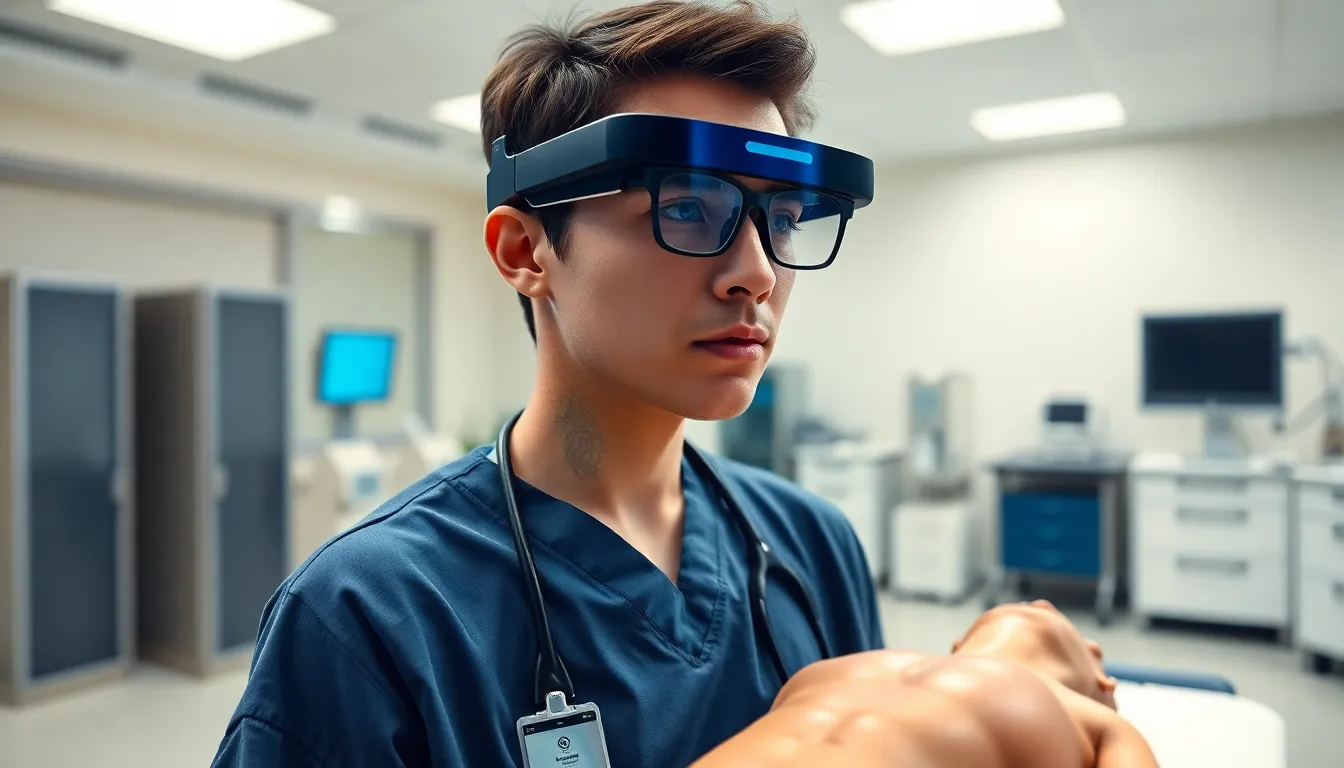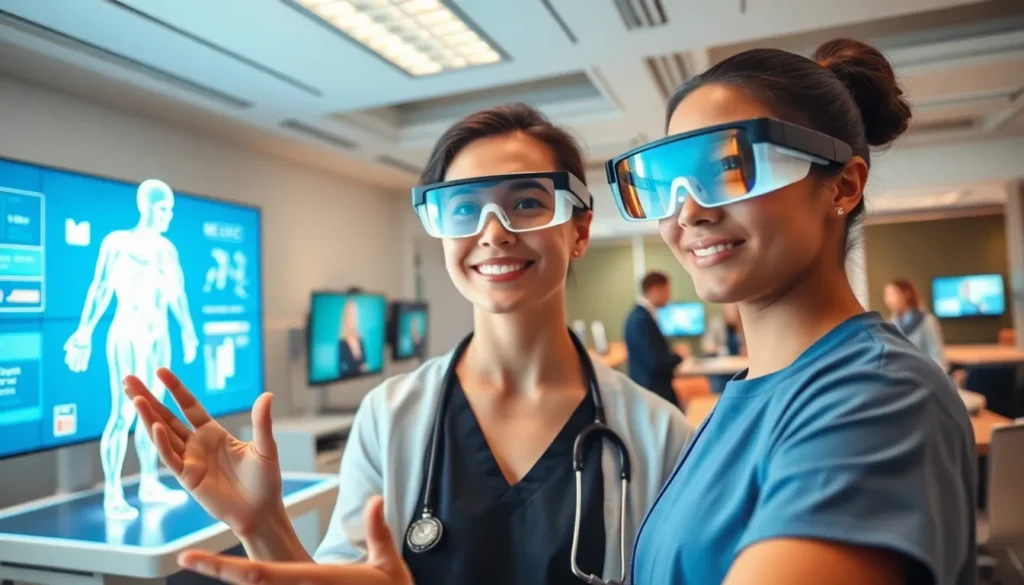Ever wished you could jump inside a textbook or experience a lecture in 3D? Well, strap in because augmented reality (AR) training is doing just that. This innovative approach is reshaping how we think about learning, making it not only more interactive but also a whole lot of fun. Imagine practicing complex procedures without the fear of making those oh-so-real mistakes. Sounds intriguing, right? Let’s jump into the world of AR training and explore how it’s transforming learning experiences as we know them.
Table of Contents
ToggleWhat Is Augmented Reality Training?

Augmented reality training merges the physical world with digital information, enhancing the traditional learning experience. Unlike virtual reality, which immerses users in a completely digital environment, AR overlays digital content onto the real world. Picture a medical student wearing AR glasses, seeing patient information or anatomy visualizations superimposed over a cadaver. In essence, AR training allows learners to interact with both real and virtual elements simultaneously, fostering a deeper understanding of complex topics.
Benefits of Augmented Reality Training
The advantages of augmented reality training are plentiful and quite impressive. For starters, it engages learners in a way that traditional methods simply can’t. Here are some of the key benefits:
- Enhanced Engagement: AR captures learners’ attention much more effectively. When individuals see 3D models or interactive scenarios, they’re less likely to zone out.
- Improved Retention Rates: Studies show that learners who experience AR content tend to remember information better. The combination of visual and physical stimuli encourages long-term memory formation.
- Real-World Simulations: Learners can practice skills in a realistic setting without any real-world consequences. For example, firefighters can train for emergencies while safely in a controlled environment.
- Accessibility: AR training is often more affordable than extensive physical training setups. Companies can simulate environments instead of investing in physical spaces or equipment.
Applications of Augmented Reality in Training
Augmented reality has found its way into various industries, impacting training in more ways than one. Here are some noteworthy applications:
Healthcare Training
In medical training, AR allows students to visualize complex anatomy and procedures. They can see 3D organ models layered over real-life patients, aiding in diagnosis and surgical practices.
Corporate Training
Professionals can engage in AR simulations that mimic real work scenarios. For instance, sales representatives can practice pitching products in a virtual setting that mirrors a client meeting.
Military Training
The military utilizes AR for mission rehearsals, enabling troops to visualize strategies and terrain without being on-site, improving coordination and tactics.
Manufacturing and Maintenance
Technicians can use AR glasses or mobile devices to overlay instructions, schematics, and troubleshooting information onto machinery. This immediate access helps in reducing downtime and enhancing repair accuracy.
Technological Requirements for Implementing AR Training
To effectively carry out augmented reality training, certain technological components must be in place. Here’s a quick rundown:
- Devices: Whether using AR glasses or smartphones, the appropriate hardware is crucial. The devices should have the processing power to handle graphic-heavy applications.
- Software: AR training programs need sophisticated software to function seamlessly. This includes AR development platforms like Unity or Vuforia, which help create engaging content.
- Internet Connectivity: Robust internet access ensures that cloud-based features can operate smoothly, allowing for updates and real-time data interaction.
- User Training: Even though AR is designed to simplify processes, users must receive adequate training to maximize the technology’s effectiveness.
Challenges and Considerations in AR Training
Even though its potential, implementing AR training isn’t without its challenges:
- Initial Costs: Setting up AR systems can require significant investment, particularly for businesses just starting out.
- Technical Issues: Glitches, lag, and outdated technology can frustrate users and impede learning.
- User Adaptation: Some learners may be resistant to new technologies. Tailored training and support are often necessary to transition smoothly.
- Content Development: Creating high-quality AR content demands skilled developers and designers, which can be a barrier for some organizations.
Future Trends in Augmented Reality Training
Looking ahead, the future of augmented reality training is nothing short of exciting. Here are some anticipated trends:
- Increased Use of AI: Artificial intelligence will likely integrate more heavily into AR training, personalizing learning experiences based on user performance.
- Cloud-Based Solutions: As technology advances, more AR applications will use the cloud. This could lead to easier updates and shareable content across platforms.
- Wider Adoption: Industries such as education and corporate sectors will increasingly embrace AR as a mainstream method of training.
- Enhanced Interactivity: Future AR applications are poised to offer even greater interaction levels, utilizing gesture control and voice recognition to engage users more dynamically.








